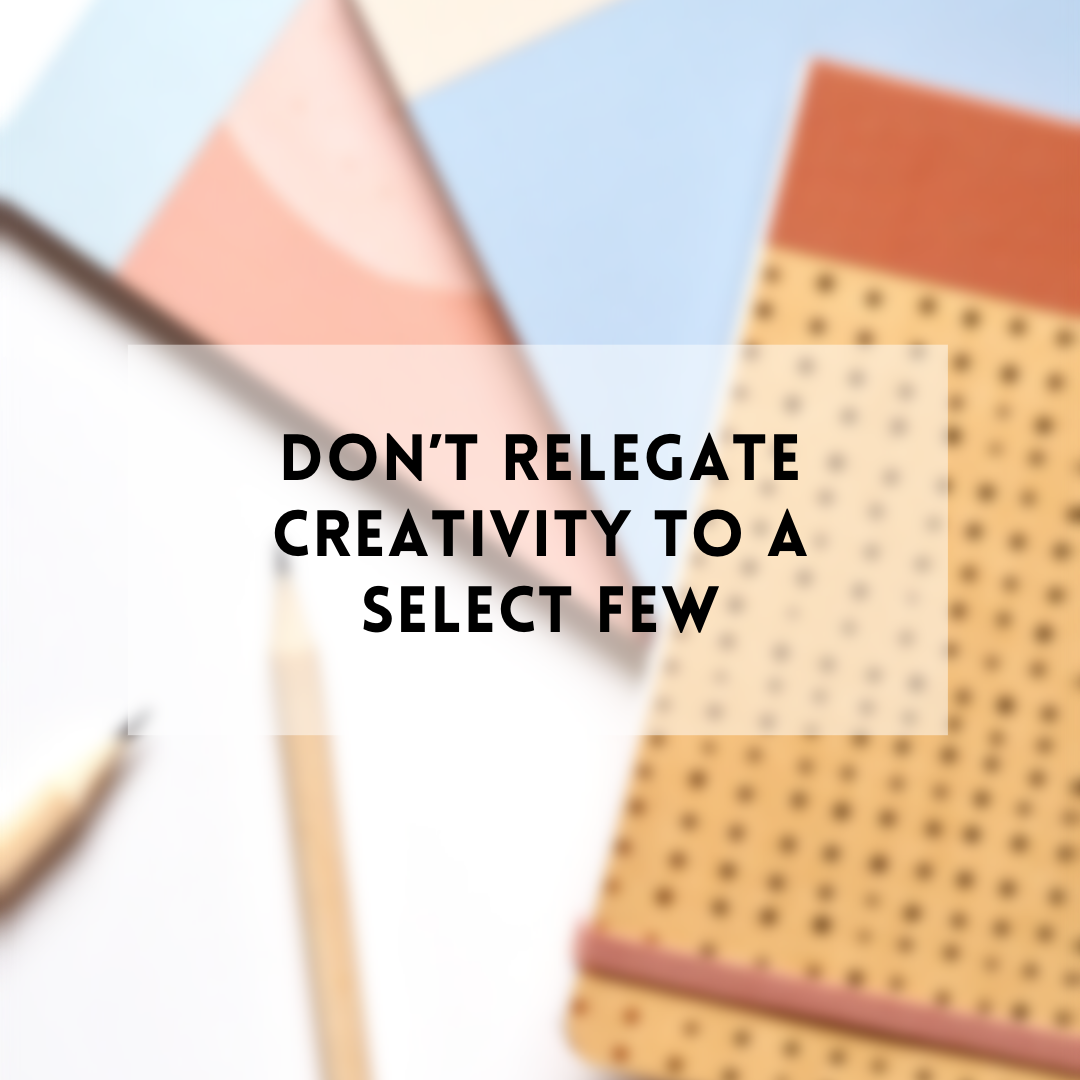Don’t relegate creativity to a select few
The future of your business depends on it.
To stay relevant in today’s rapidly changing marketplace you must change. ‘Adapt or die’ in evolutionary terms. If you stay the same or move too slow, you put your business at risk of not being here in the future.
How does change occur?
It has to be created. We are the makers of our destiny and we must make faster than ever because the speed of change around us is increasing every day.
Who do you think of when you think of makers or creators? Do you think of a department or team somewhere in your organization?
“The designers”
“The artists”
“The creatives”
Creativity is often relegated to specialists.
Design and art are practiced disciplines. The tools and skills gained in practice cannot and should not be discounted. People invest a great deal of effort in becoming designers or painters or builders. I wouldn’t hire someone to design and build my house who had never done it before.
However, when it comes to creativity, this is an attribute inside most people.
Fear or discomfort is what keeps it from emerging. We limit ourselves and those around us through offering judgement or making statements like “Oh me…I’m not creative” and as a result, limit our potential to thrive.
Carl Rogers presents creativity as a fundamental human attribute.
“The mainspring of creativity appears to be the same tendency which we discover so deeply as the curative force in psychotherapy-man’s tendency to actualize himself, to become his potentialities. By this I mean the directional trend which is evident in all organic and human life-the urge to expand, extend, develop, mature-the tendency to express and activate all the capacities of the organism, to the extent that such activation enhances the organism or the self.”
With the right conditions, creative thinking and new ideas arise. As a result, there is greater potential for growth and change. There is greater likelihood that you will come up with the next idea that will keep you in business.
We can’t relegate creativity to a few key people or a department. We must elevate the value of creation and cultivate the conditions for new ideas to come forward throughout our organizations.
Here’s How.
Create Safety.
Accept people as people first. While a person may be (and should be) evaluated based on performance and ability, it is critical that they are valued as a person separately.
If accepting someone is tied solely to their performance in the business, they will cling to known, safe ways to gain that status and acceptance.
Accept someone as a whole and complete person first, regardless of performance and they will be more likely to try new things.
You may be familiar with the importance of having empathy with your customer. It’s equally as important to have empathy for the people INSIDE your organization.
Ice-breaker Exercise: Interview another person about their morning and come up with a solution to make their morning more pleasant. Draw a picture for them.
Defer Judgement.
Allow for any and all ideas to come forward. This doesn’t mean that every idea should make it onto the roadmap or plan for the quarter.
It means that every person who brings a new idea forward should be heard without judgement. When you offer judgement first, people stop sharing.
Empower the team to share all kinds of ideas. Invite unlikely suspects to a brainstorm. Maybe there is a young intern who has lots of energy and unique perspective? Create a cross-functioanal team of people with diverse perspectives to tackle a problem together.
Try: “Yes, and” (improv acting method) in your next brainstorm. When someone shares an idea challenge yourself to build on that idea with an “yes, and” statement. Do this for 15 minutes. You can evaluate the ideas and make choices about what to pursue afterward. But during the brainstorm build, build, build. If a “no, but” comes up just notice that and pause — flip the script — turn it around into a “yes-and.”
- Use post-its or a white-board with lots of colors to map and build ideas.
Create Space.
New ideas come up more easily when you step outside your comfort zone, look at new things, shift perspective and see new relationships.
Dedicating time is the first step. Set aside time to solve a problem. Block calendars. Pick a space. Go somewhere off-site as an added bonus.
Block interruptions. No laptops or cell phones in the space. Commit and attend to the problem.
Bring inspiration. Set the stage by having each person bring in something that inspired them this week or made their life better. Have them print out or clip the picture and share the story with the group. Tape it to the wall.
After the share out have each person declare the following in response to what was shared:
I like _____
I wish_____
I wonder _____
Capture those on the whiteboard. See what patterns emerged. Refer to both the list and the shared ideas during your problem solving.
You might be surprised at what emerges when you give yourself the time, space and start your meeting with inspiring examples.
